Projectors for photography that are affordable and high-quality.
With the help of the best projector for photography, you can present your shots as large, bright, images. Besides, families can use such a device to recollect special moments in their lives by projecting B&W as well as color photos on a big screen.
When selecting the best projectors for photography, I took into consideration many factors. A great modern projector should offer high resolution, decent contrast and brightness, excellent image sharpness, and superior color balance.
Other significant factors to consider are the number of ports and the type of projector (wireless or wired, LCD or DLP screen).
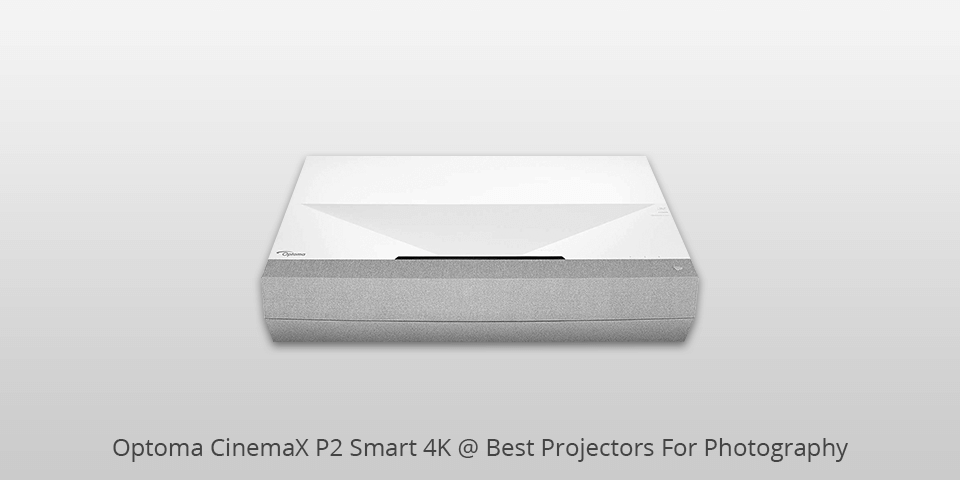
Resolution: 4096x2160 | Contrast Ratio: 2,000,000:1 | Brightness (Lumens): 3000 | Screen size: 84" - 120"
The Optoma CinemaX P2 Smart 4K is a revolutionary device that enables the user to take the great experience for photos. This device provides a cinematic experience at its best and also allows its users to take a great home cinema experience from the comfort of their own homes. The main feature that this device is its high-quality picture clarity.
One of the best features of this 4K projector is its size. It is just slightly bigger than an ordinary television and is also very convenient to use. One of the other main features of this photo projector is that it comes with its own easy-to-follow instructions which guide its users on how to properly use it and make the most of their cinema experience.
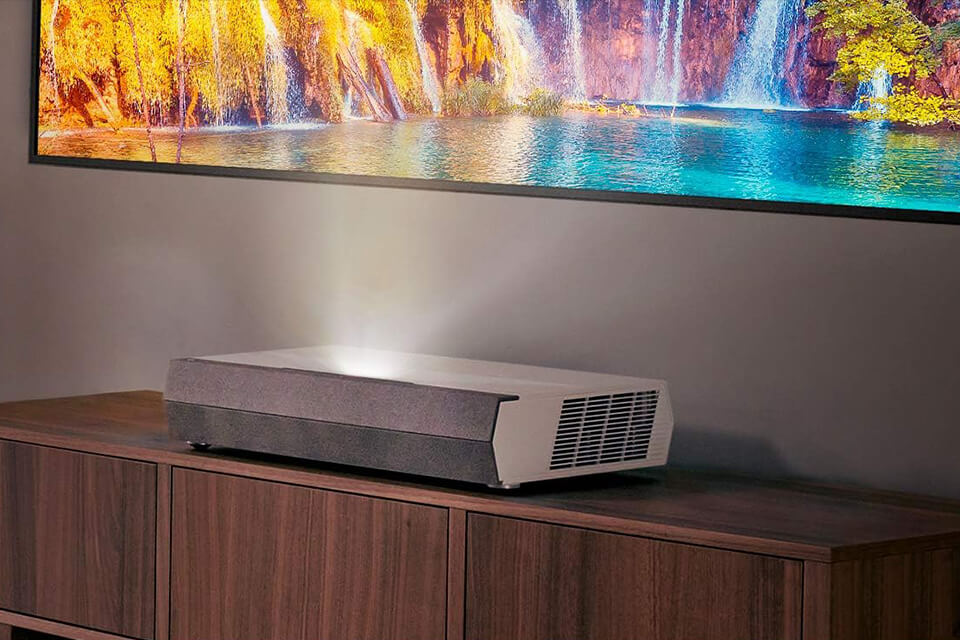
Another benefit that users can enjoy from this brand is the ability to project any source of image, and not just televisions. Its users are able to enjoy their movies to the fullest without worrying about the quality of the projection.
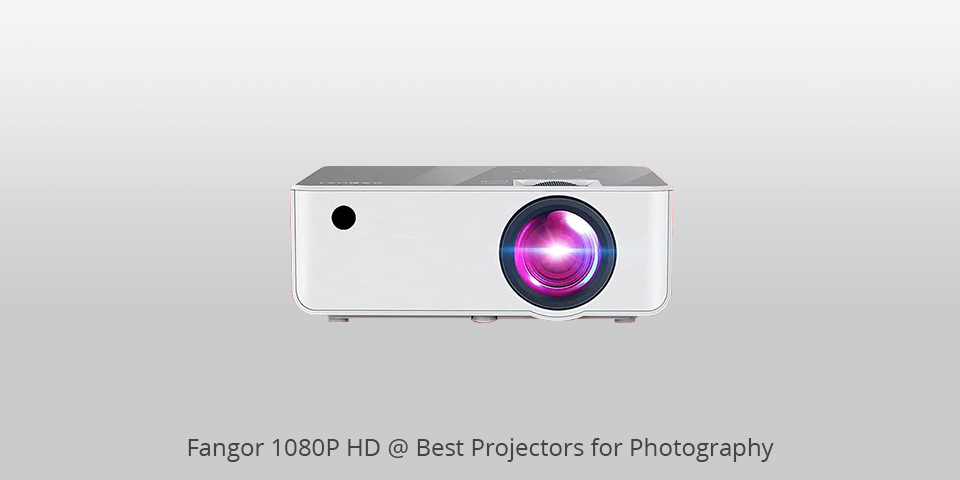
Resolution: 1920x1080 | Contrast Ratio: 10,000:1 | Brightness (Lumens): 6500 | Screen size: 80" - 230"
First off, when it comes to buying a projector under $200, there are a few key factors to consider. And this model doesn't disappoint in terms of resolution, brightness, and contrast.
With its true 1080p capability, you can expect a high-quality image that's sharp and clear. Plus, the focus and keystone dials allow you to fine-tune the picture to your liking.
One standout feature of this projector for photos is its compatibility with Bluetooth speakers. This means you can pair it up with some good speakers for an enhanced audio experience.
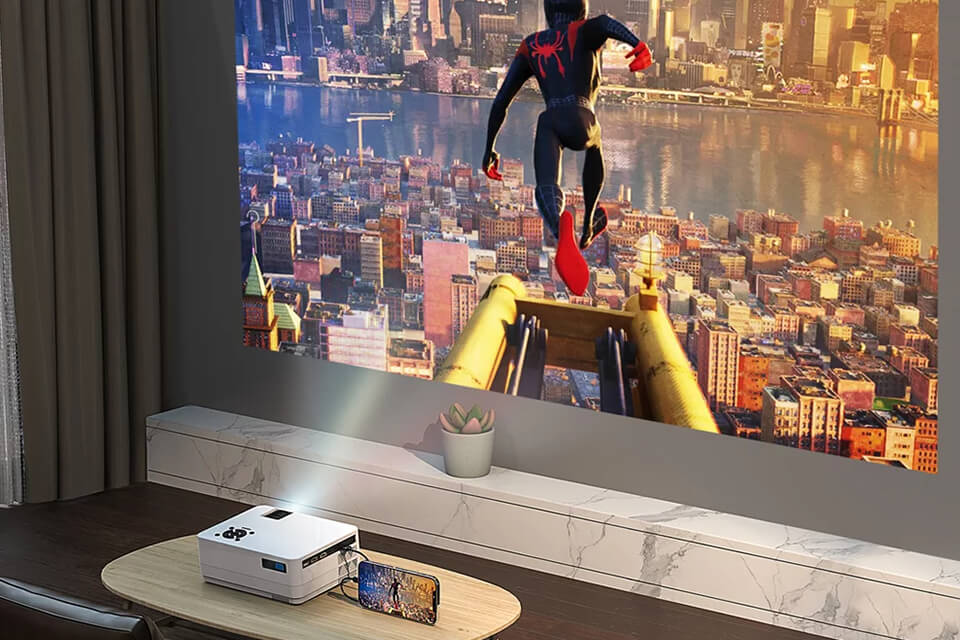
The Fangor 1080P HD projector is super easy to use, making it a great value for your hard-earned money. Moreover, you can hook it up to various devices like TV boxes, PCs, laptops, tablets, and smartphones. The built-in WiFi feature is a game-changer, allowing you to stream video content directly from your smartphone.
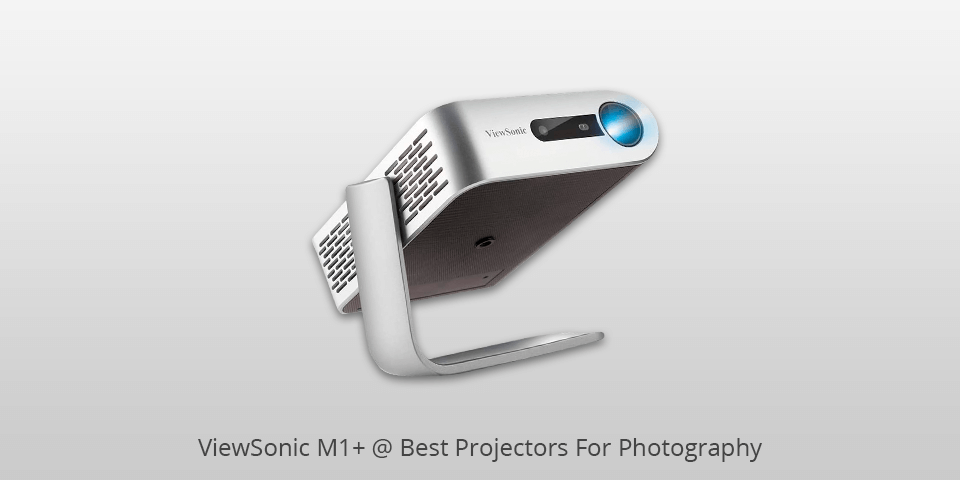
Resolution: 854x480 | Contrast Ratio: 120,000:1 | Brightness (Lumens): 250 | Screen size: 24" - 100"
The ViewSonic M1+ is considered by many to be a great digital photo projector. This is because of its many features, including its ability to project light directly onto the film.
The biggest advantage of using this device is portability. The projector is actually only about ten inches long, making it very portable and easy to use. The screen size can range in size from two inches to three and a half inches.
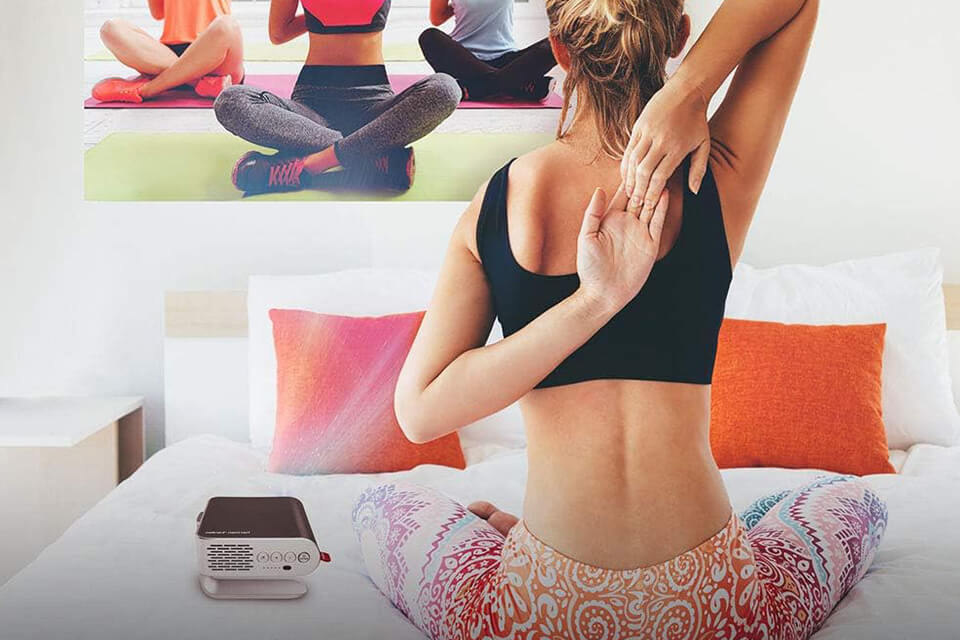
The ViewSonic M1+ also projects digital pictures, which can also be displayed on a wide variety of different devices, such as cell phones, laptops, and HDTVs. Many digital images these days are produced by cameras and camcorders.
The digital output makes the images available to be viewed on a multitude of different devices, including this portable projector.
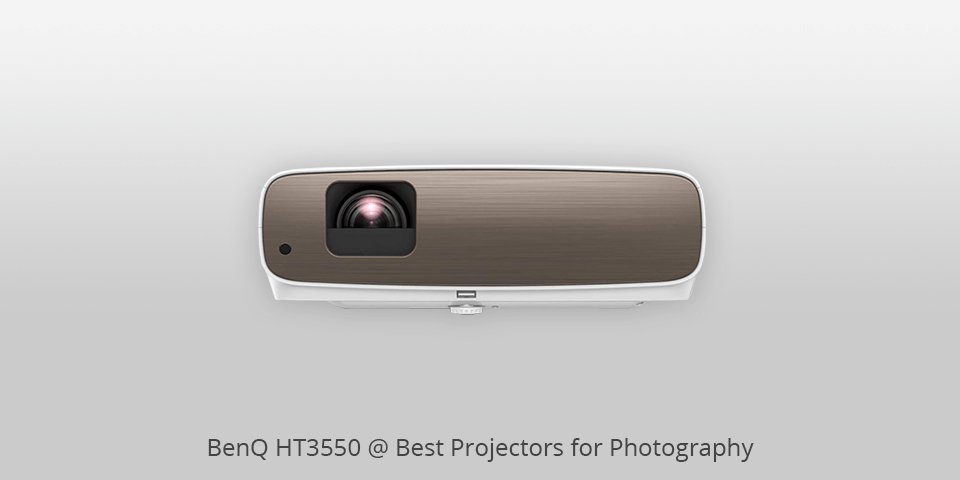
Resolution: 4096x2160 | Contrast Ratio: 30,000:1 | Brightness (Lumens): 2000 | Screen size: 25" - 200"
First off, let me tell you that this projector under $1000 is specifically designed for home cinema use. It's compact enough to be mounted on a ceiling or placed on a shelf, but it's large enough to fill up a big screen. The HT3550 supports HDR10 and Hybrid Log-Gamma for 4K UHD playback, so you can enjoy stunning visuals.
The HT3550 photo projector is color-calibrated right out of the box, ensuring precise and vibrant colors. It also boasts a wide DCI-P3 color space, which covers a larger part of the visible spectrum compared to older technologies like Rec. 709. This combination guarantees that colors look natural and vibrant, even in brighter rooms.
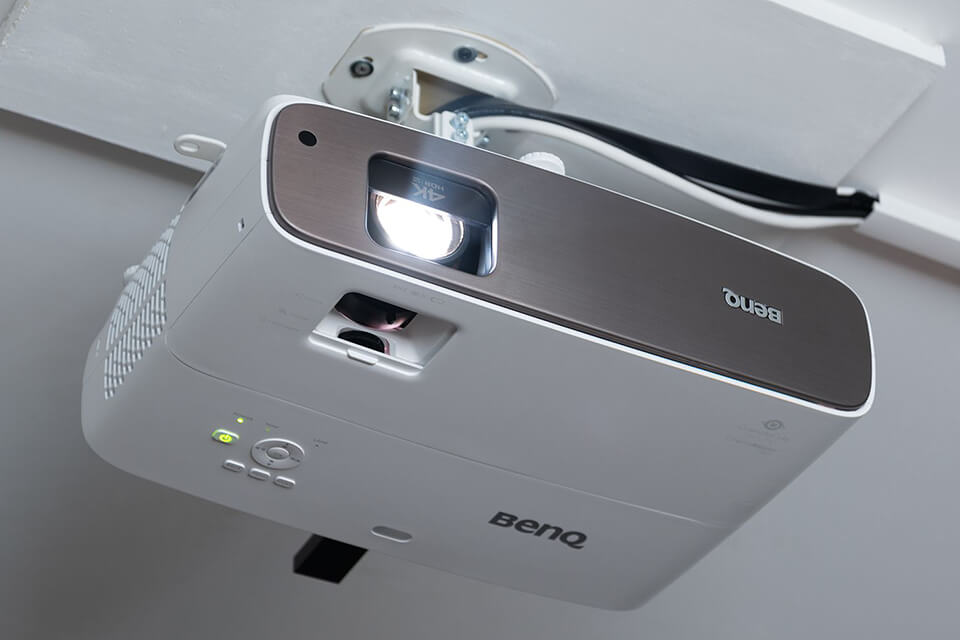
However, it's important to mention some potential problems with the HT3550. Some users have reported that the slow color wheel can cause issues for those sensitive to the rainbow effect.
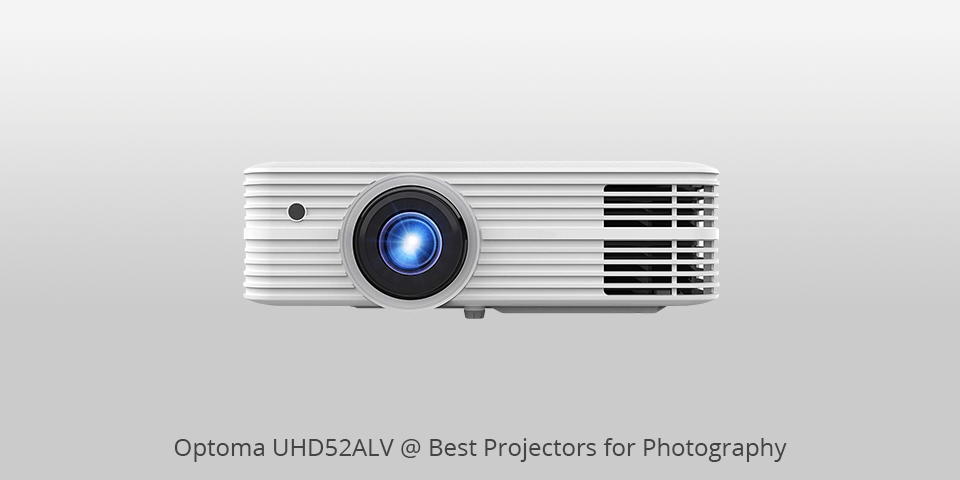
Resolution: 3840x2160 | Contrast Ratio: 500,000:1 | Brightness (Lumens): 3500 | Screen size: 34" - 302"
The Optoma UHD52ALV is considered as one of the lightest portable projectors available in the market today. It is perfect for both home and commercial presentations. This projector has the ability to display two-dimensional images from digital cameras, including high definition digital cameras.
The Optoma UHD52ALV projector uses the Digital Light Processing technology, which can process signals from a camera in real time. In fact, it can process more than three million colors. With the HD imaging processor of the projector, you will be able to capture images in the clearest and most realistic way.
You can use the projector for photo shoots, for live presentations, and even for directing video clips.
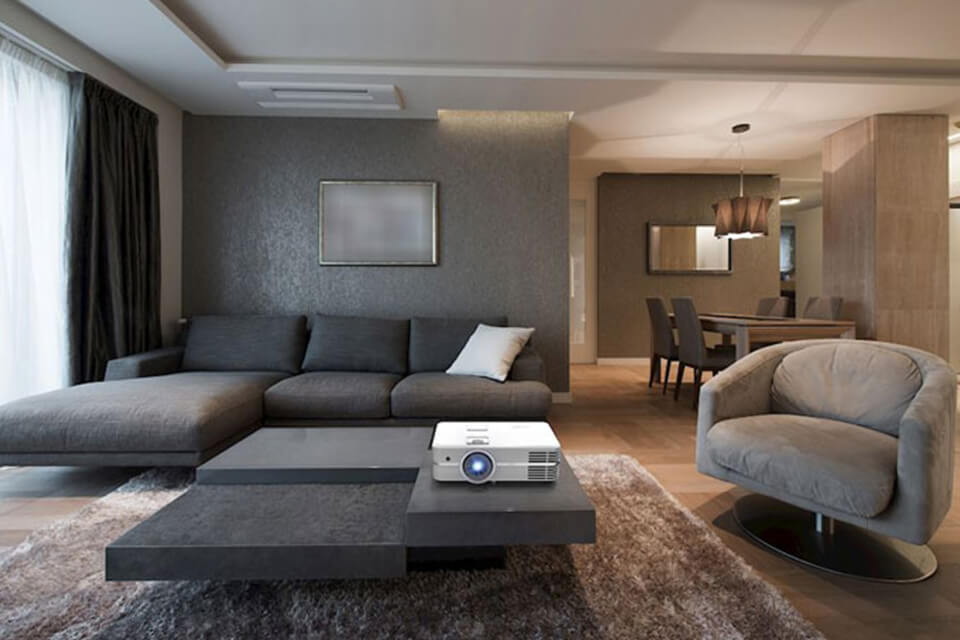
It is also known for its reliability and durability. Moreover, this photo projector features an automatic focusing system so you do not have to focus manually.

Resolution: 3840x2160 | Contrast Ratio: 2,000,000:1 | Brightness (Lumens): 2500 | Screen size: 80" - 120"
One of the standout features of the HU715QW is its affordability. For a 4K ultra-short-throw projector, it comes at a surprisingly reasonable price. And don't let the price fool you, because the picture quality is excellent. With a brightness of 139 nits and vibrant colors, this cheap projector delivers a visually pleasing experience.
The HU715QW projector for photos uses a blue laser/phospher wheel/color wheel combination instead of a triple-laser setup like some more expensive models. However, it still manages to produce rich and accurate colors. It even downmixes HDR content to match its capability, so you can enjoy highlights while still having full-screen brightness.
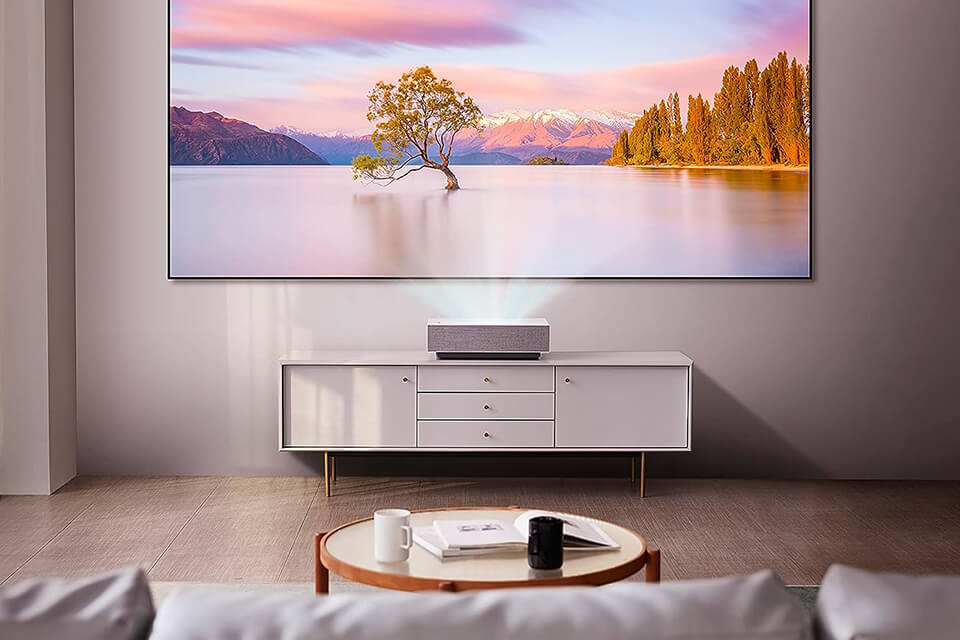
Another advantage is the integration of LG's TV DNA into this projector. It features the full webOS smart system, making it easy to download streaming apps like Netflix, Disney Plus, and Amazon Prime Video. Plus, there are dedicated shortcut buttons on the remote for quick access. It also supports AirPlay 2 and MiraCast for casting and screen mirroring.
| IMAGE | NAME | FEATURES | |
|---|---|---|---|

|
Optoma CinemaX P2 Smart 4K
OUR CHOICE
|
CHECK PRICE → | |

|
Fangor 1080P HD
COMPACT
|
CHECK PRICE → | |

|
ViewSonic M1+
EASY SETUP
|
CHECK PRICE → |
Choosing the best projector for photography might be difficult. Here are some questions to consider before beginning your search.
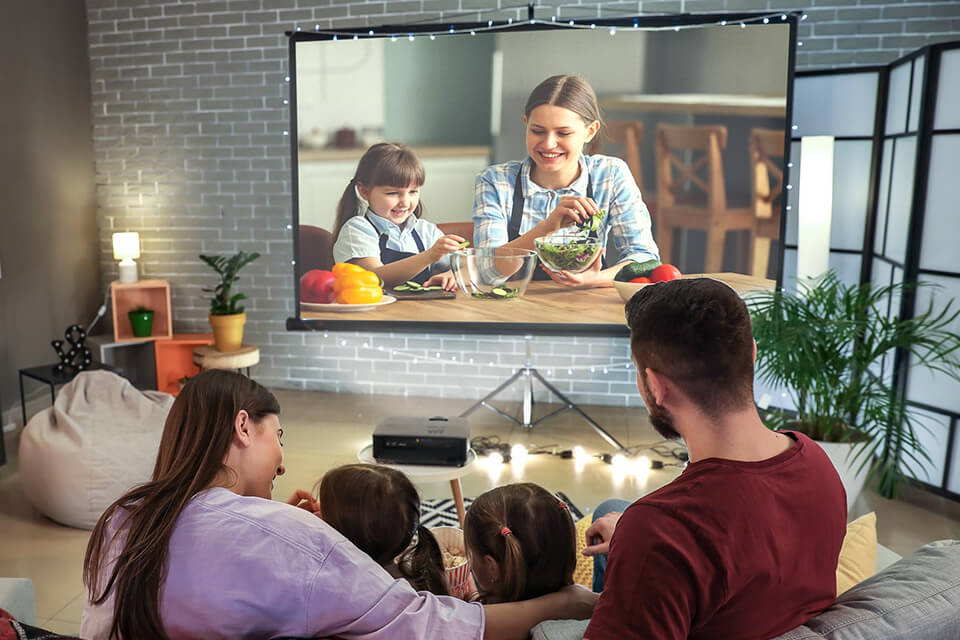
Resolution. One of the most significant aspects of the best projector for photography is its ability to show pictures in a high resolution. The more pixels are used for projecting images, the more detailed the picture shown on the screen will be.
Modern digital cameras and film scanners can catch more details and textures than an average projector can display. So, to make sure that all details will be shown, choose a projector with the highest resolution you can only afford.
Various models have different resolutions, starting from WXGA - 1280x800, SVGA - 800x600, to Full HD - 1920x1080. I recommend selecting a projector that has a resolution of at least 1280x800, and if your budget allows - 1920x1080 pixels.
Throw distance. It refers to the distance between a projector and the screen, where the image is shown. It is also called the “ejection distance”.
In the world of photography, throw distance is indicated by two numbers separated by a colon, e.g. 1:1. The first figure shows how far the projector is from a screen, whereas the second number indicates the length of the screen.
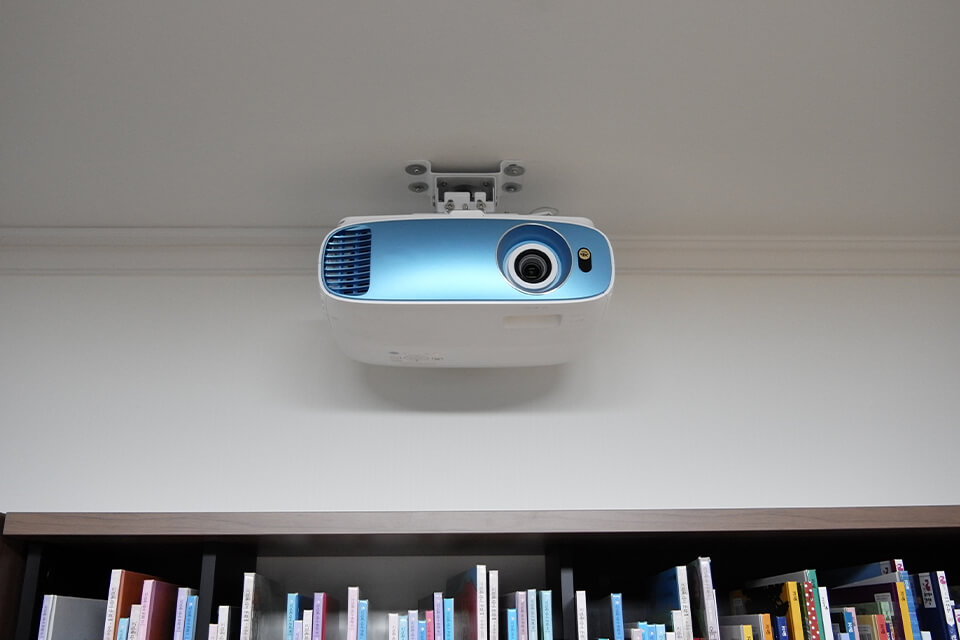
Therefore, while choosing the best projector for photography, you should consider where you are going to use it: in a small room or huge hall. It will help you determine how long the diagonal of the screen should be.
Brightness and contrast. Light and shadow may influence the quality of photos greatly. Light brightness is measured in lumens. Projectors can have different capacities, which can start with 50 lumens (widely used in smartphones). However, some more expensive projectors under $3000 can reach the brightness of over 25,000 lumens.
For photography, it's great to start with 2500-3000 lumens. The more, the better.
The contrast coefficient indicates the difference between the darkest and the brightest areas of the projected image. The higher this coefficient is, the better the quality of the projected image. The contrast level is usually indicated by two numbers separated by a colon.
Contrast coefficient 1000:1 means that the brightest part of the projected picture will be 1000 times brighter, than the darkest spot. I recommend you make sure that the digital photo projector you are going to purchase has the minimum contrast ratio of 3000:1. Such a device can project quite distinct and vibrant images.
Connection method. Here I mean the way a projector for photos is connected to a device. The image you want to project may be stored on your smartphone, laptop, or flashcard. Usually, projectors are fitted with an HDMI port, and most models have several input ports. My advice is to make certain that you get a device with at least one HDMI port.